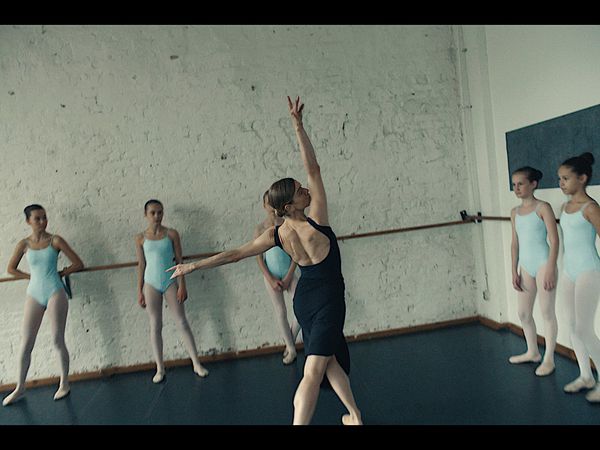Isabelle Stever’s emotionally complex Grand Jeté, screenplay by Anna Melikova, based on the novel by Anke Stelling and starring Sarah Nevada Grether with Emil von Schönfels and Susanne Bredehöft had its World Premiere at this year’s Berlin International Film Festival. Shot by Constantin Campean and co-produced by Olga Dykhovichnaya (producer of Juja Dobrachkous’s Bebia, À Mon Seul Désir, a highlight of the 50th anniversary edition of New Directors/New Films) is a film of exquisite closeups, from well-worn beige T-strap dancing shoes to hairpins taken out for a ritualistic weigh-in.
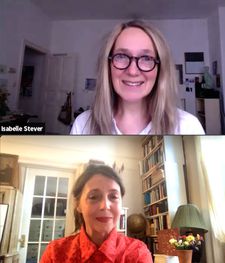 |
| Isabelle Stever with Anne-Katrin Titze on Chris Marker: “La Jetée is one of the best short films ever made …” |
Ballet dancer Nadja (Sarah Nevada Grether) with injuries and a body that is breaking is exiled to teaching students. Her grid is as rigid as the tiles in the swimming pool she frequents. “There is no today in dancing” she tells a pupil who asks to be excused that day. Nadja’s strong back, her muscles, her tortured feet are omnipresent and beautiful on screen and glister with meaning. She has rashes on her neck that catch the gaze the way a car crash does.
When Nadja returns for a celebration from Berlin to the small town where her mother Hanne (Susanne Bredehöft) lives, she travels by train with a big porcelain dog in tow as a gift. The mother’s guests show how much and how little they care, mentioning that they just saw Nadja on TV in a taped performance of The Nutcracker, or was it Swan Lake? All the same because in their minds “ballerinas live off men”, which prompts Nadja to counter that they also do not have any normal bodily functions. This shuts down the gossipy attacks on her for the time being.
Indeed there is an urgency expressed in her body and the film makes it clear that what we see is about survival. Everything in this old home signals passive aggressiveness, except for teenaged Mario (Emil von Schönfels), who now lives in Nadja’s former bedroom. After an event where Mario performs in a rather unusual competition, Nadja gives him advice: “You flirt with the audience” she says, but “viewers respect those who ignore them.”
Taboos interlace with the mundane. Incest and food, animal figurines and fitness machines, poetry and predilections assemble into a complete world that is ready to dissolve at the edges. A comment by Hanne about changing the bed linens forges all the coldness and judgement of Mother Holle, albeit packed together with the resolution to wilfully ignore. The offerings in Grand Jeté are abundant; they are neither alms nor bribes. When Marco asks Nadja to dance for him, she sets him, and us, straight, because what he wants is impossible. “You can’t dance for anyone.”
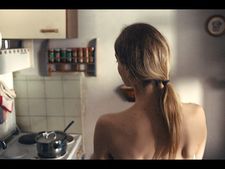 |
| Isabelle Stever: “I could say that the character of Nadja is her body.” Photo: Constantin Campean |
From Berlin, Isabelle Stever joined me on Zoom for an in-depth conversation on Grand Jeté.
Anne-Katrin Titze: Hi, you said you are working on a new film. Is it a very different subject?
Isabelle Stever: Yes, my films are always very different subjects. I don’t have a typical way of story. There is a roof under which I could somehow connect my films. It’s always about a central female character who in a way is not corrupt. She is fighting against corruption.
AKT: That makes perfect sense with Grand Jeté. Let’s start with the title. Of course it’s a ballet expression. It’s a jump with one leg forward and one leg back. I also had to think of Chris Marker and La Jetée in its sense of time and identity, parent/child even, past and future. Were these thoughts that went into the title?
IS: La Jetée is one of the best short films ever made and it is a big honour just to mention it with my humble piece. I didn’t think about La Jetée by having this title, but since I’m a mathematician in diploma, I know about the idea of jumping in a circle. And how by this impossibility of this jump where there is nothing in front and nothing behind somehow she can go through time maybe and makes an awkward miracle happen by reunifying with her son.
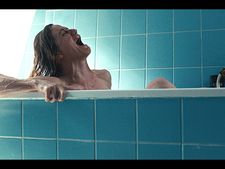 |
| Isabelle Stever on Grand Jeté: “You can also see this film as a body horror film.’ Photo: Constantin Campean |
Also there are images in the film which somehow gave this idea a flaw when they are in the car. From above it looks like a paternoster. You don’t know if it’s going forward or backward. When she swims it’s like an elevator in water; you don’t see the direction really. Somehow they go in an awkward way through time and space.
AKT: There is also that sense with her mother. And the son. And that you don’t give a gender to the baby.
IS: Yes. I’m thinking about the baby.
AKT: I noticed that your co-producer Olga Dykhovichnaya who also worked with Juja Dobrachkous on Bebia, À Mon Seul Désir, which was a film I liked very much a few years ago and I interviewed the director. How did the co-producer come onboard?
IS: My wife, who is the author of Grand Jeté, was the curator of a film festival, that Olga Dykhovichnaya was the head of. And they know each other. And when we were shooting, there was Corona, COVID, so there was this big fear that the budget will not keep up with our expectations on the result. Then Olga jumped in with help, for which we were very grateful. She kind of saved our shoot and so she became co-producer.
AKT: That’s great. Back to the baby?
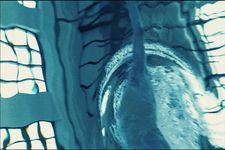 |
| Isabelle Stever on cinematographer Constantin Campean: “We worked on the visuality for a long time and really discussed it.” Photo: Constantin Campean |
IS: The gender of the baby is not important for the impact of the story. It would even kind of disturb the impact if you knew the gender of the baby because somehow it’s life. It’s life which comes out of something which is not morally consistent with our society rules. It was for me also a reason to shoot this film.
AKT: That makes perfect sense in the context of the film. Sarah Nevada Grether is absolutely marvellous. It’s impossible to imagine the plot of the film without her. That goes from her slight American accent to her background as a ballet dancer. She studied with John Neumeier in Hamburg and she was part of the Stuttgart Ballet. Tell me a bit about casting her!
IS: It was in a way my desired cast for this role because I was looking for a woman that I cannot immediately put in a drawer, who doesn’t pigeonhole with the story. That you immediately understand the milieu and the challenges she went through. You can see her as a victim of circumstances but Sarah Nevada Grether is from her vibration very unpredictable. She has very unpredictable vibrations. Can you say that?
AKT: Yes.
IS: And this compulsive corset of Nadja with this character of Sarah Nevada Grether and her vibrations make a very seducing friction.
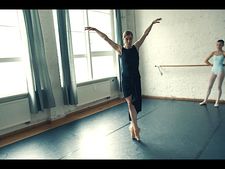 |
| Isabelle Stever: “This compulsive corset of Nadja with this character of Sarah Nevada Grether and her vibrations make a very seducing friction.” Photo: Constantin Campean |
AKT: Perfectly expressed as a seducing friction. Early on we see the wounds on her neck. She wears her scars as if they were medals and her bloodied feet are like stigmata. The body becomes grander, becomes metaphor without losing the sense of physical reality, I felt.
IS: I could say that the character of Nadja is her body. You can also see this film as a body horror film. If you would like to have a genre. You can see it as if her suppressed body through the challenges of her ballet career and always going over a next limit, that in this vacuum of not being able to dance anymore it breaks out and has its own agenda, trying to survive.
AKT: It absolutely feels as if this is about survival. Then there are her teaching methods, the weigh-ins of the students. The one student who takes out her hairpins before she is being weighed! There is tension and care on one side and on the other is a letting loose and not being tied in with any kind of convention. It’s fascinating. Do tell me about how the novel is related to the script and related to the film!
IS: That’s a long story, I’ll try to make it short. This is my third work with the author of the novel. I adapted two novels before into films. This story came to me another way from an actress. It had an impact on me which I couldn’t cope with. It was a different story, this affair of a mother with her son. I gave it to Anke Steling, and even paid her to write a novel, which I would turn into a screenplay. And she wrote a novel which was not possible to be filmed my way.
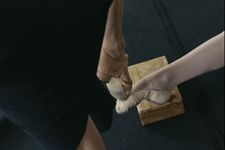 |
| Nadja’s (Sarah Nevada Grether) beige T-strap ballet shoes with the little heel Photo: Constantin Campean |
Maybe if you compare it to Lolita, the language was a way to cope with the narration. If you show what’s just happening, which is what you do in film, you can’t really cope with it. I couldn’t find a key to adapt it into a screenplay. Then I met Anna Melikova who was a journalist who interviewed me and we became friends and I had the feeling somehow that she could maybe adapt this novel into a screenplay because she has a special taste of films and she also did ballet. Somehow there was a connection between her and the character. Anna has no kids but somehow I felt that she could write the screenplay.
In Anke Stelling’s novel it’s about the craziness of education. Education is always a thing which cannot be right. It’s always wrong. You can say how you deal with the wrongness of education makes it more bearable. The protagonist of Anke Stelling’s novel thinks that Nadja somehow is more honest. Anna brought back the other aspect of the novel, that Nadja is going back to her childhood place. She is from Crimea and somehow she put the atmosphere of her childhood place in the screenplay. She gave the characters of Nadja and Mario more identity without making them too psychological. And she put a reality into the ballet education.
AKT: Oh yes, clearly.
IS: Because she had experienced it herself. In her experience a male teacher was sitting on her so that she goes deeper into the spagat.
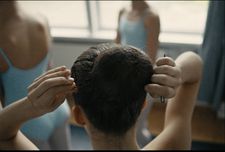 |
| Isabelle Stever on the hairpins: “A friend of ours who was also doing the choreography in the film, Chandana Hörmann - she told us the story.” Photo: Constantin Campean |
AKT: The split.
IS: And the story with the pins - a friend of ours who was also doing the choreography in the film, Chandana Hörmann - she told us the story. It really happened.
AKT: There are moments that make the mind wander, because they feel so real and captured. I’m thinking for example of the moment when Nadja tastes the mother’s cooking from the pot, licks the spoon and puts the spoon unwashed back into the drawer. Also, all these porcelain dogs everywhere. Only one live dog at the club. The unexplainedness is really great.
IS: Thank you.
AKT: Dogs and cats are a theme here. They call each other kitty cat, and she is traveling on the train with the porcelain dog, etc.
IS: It was developed with the art designer and me during the work on what would Nadja’s mother Hanna’s home look like. For us it was like a biotope; it’s very alive but too small. It’s warm but maybe even too warm and tight. Nadja’s home is morbid, it’s kind of bad and dry. In this home of Hanna we needed something that expresses her. We were brainstorming and the dogs came up to be a great idea because dogs are in a way loyal.
AKT: Faithful.
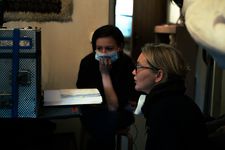 |
| Julia Ketelhut (casting, script & continuity supervisor) with Isabelle Stever Photo: Jonathan Deges |
IS: They obey no matter what you do with them. And cats in the stereotype they have more of an own identity and will.
AKT: Elusive, yes.
IS: And Nadja brings this special dog to her mother which doesn’t really fit with the other dogs, but it’s still a dog. That was also the set designer’s [Mirko Rachor] idea.
AKT: These are good details. The actor who plays the son Mario, Emil von Schönfels, his performance is terrific. How did you cast him?
IS: Emil von Schönfels was 17 at the casting and he was 18 during the shooting. He has a lot of experience as an actor, he was shooting films since he was six years old or something like that. He’s also an actor who looks for stories which are not the usual type. It was a great experience for him to work on this film and he is very happy about the result. I think nobody else could have played this part because as an actor he has a very enigmatic vibration.
And you can’t say when you watch him if he’s a hurt vulnerable teenager wearing a cool mask or if he is just as he is. In a way like in Lolita, he is also a projection space. In a way I try to tell him always through Nadja. We see him through Nadja even when he’s not with her. He always gets shifted back to her in a way. He’s a projection space.
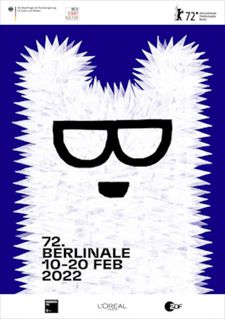 |
| Grand Jeté premiered in the 72nd Berlin International Film Festival |
AKT: You brought up Lolita twice, I actually do have in my notes Nabokov who came to mind while watching your film. And a Rorschach test - there are so many moments where you allow for personal memory space. That starts from the beginning with the grid in the pool. Tell me a bit about your work with the cinematographer.
IS: I think if you look at a story from a lot of sides and you work on it and try with a film to reach all these perspectives, then it starts to become a Rorschach test, but still there is a row of events happening. Which are also in my mind under a roof together. But I like to leave the observer a freedom to find himself there. This freedom is also led a little bit.
And the story of the shoot was that we didn’t have enough money. First it would have been a big step, it’s my fifth film, but the film funding was so nervous about this issue that they rejected it, which was a shock. Then I had to think anew and I had a team in which a lot were students. And some were dinosaurs who had a lot of film experience, but the DoP [Constantin Campean] is a student of mine.
He was in a class and did very good photography there, he’s obviously very talented. We worked on the visuality for a long time and really discussed it. It was a very inspiring work for both of us. After Grand Jeté he already shot two features, even though he didn’t shoot his diploma film as yet. The key for the narration was the idea that what is happening is in a way narrated like a legend, a story the characters can’t do anything about.
AKT: The hands of fate.
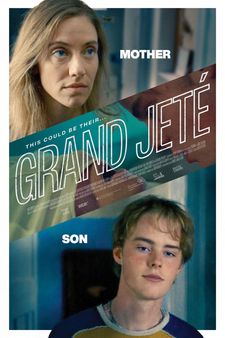 |
| Grand Jeté poster |
IS: It’s not their fault in a way, it’s narrated. It’s a story, it’s a legend. At the same time we try to create an atmosphere that anything could happen at any time. In this friction of predictable and unpredictable we created our camera work.
AKT: It has a quality of myth or fairy tale, and there are many tackling the incest theme, from Oedipus to Allfur, Allerleirauh in the Grimm’s collection with the incestuous father. I was fascinated by some of the close-ups, for instance her beige T-strap ballet shoes with the little heel.
IS: Yes, I tried in the design, in clothes and furniture, not to have a very specific time. They are all in a way timeless so you can connect.
AKT: Do you have any plans for New York?
IS: I lived in New York in the ’80s, 85 to 87. I loved it. You also lived in New York then?
AKT: No, I came more than a decade later. Where did you live?
IS: On 9th Street between 1st and 2nd.
AKT: I used to live right nearby, on 5th Street between 2nd and 3rd in the East Village as well.
IS: Say hi from me to New York and have a great day!
Grand Jeté at Laemmle Royal in Los Angeles on September 20 will have an in-cinema Q&A with Sarah Nevada Grether and will open for a week-long run at Laemmle NoHo 7 on September 23.








